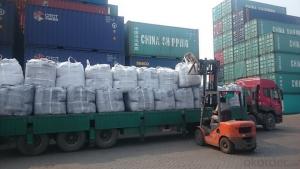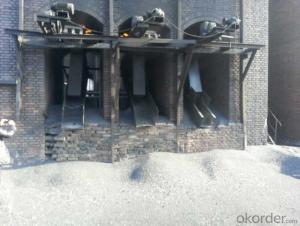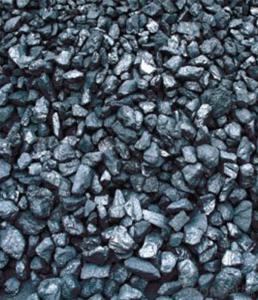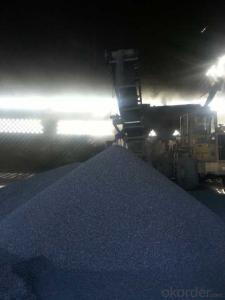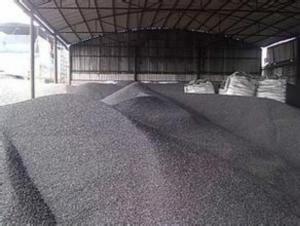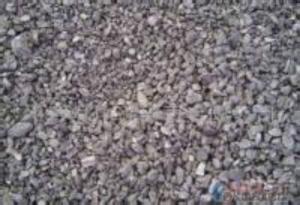GPC with lower N0.03% max in Low VM with smaller size
- Loading Port:
- Tianjin
- Payment Terms:
- TT OR LC
- Min Order Qty:
- 21 m.t.
- Supply Capability:
- 5000 m.t./month
OKorder Service Pledge
OKorder Financial Service
You Might Also Like
Introduction:
GPC has good characteristics with low ash, low resistivity, low sulphur, high carbon and high density. It is the best material for high quality carbon products. It is used as carbon additive in steel industry or fuel.
Features:
1.Our strong team provide you reliable service that make you feel purchasing is more easier
2. We ensure that we can supply capability with competitive price.
3. Work strictly to guarantee product quality,
4. Highest standard of integrity. Guarantee customer's benefit.
5. Supplying Pet Coke, Met coke, Foundry Coke, Carbon Raiser etc.
Specifications:
F.C.% | 95MIN | 94MIN | 93MIN | 92MIN | 90MIN | 85MIN | 84MIN |
ASH % | 4MAX | 5MAX | 6 MAX | 6.5MAX | 8.5MAX | 12MAX | 13MAX |
V.M.% | 1 MAX | 1MAX | 1.0MAX | 1.5MAX | 1.5MAX | 3 MAX | 3 MAX |
SULFUR % | 0.3MAX | 0.3MAX | 0.3MAX | 0.35MAX | 0.35MAX | 0.5MAX | 0.5MAX |
MOISTURE % | 0.5MAX | 0.5MAX | 0.5MAX | 0.5MAX | 0.5MAX | 1MAX | 1MAX |
Pictures
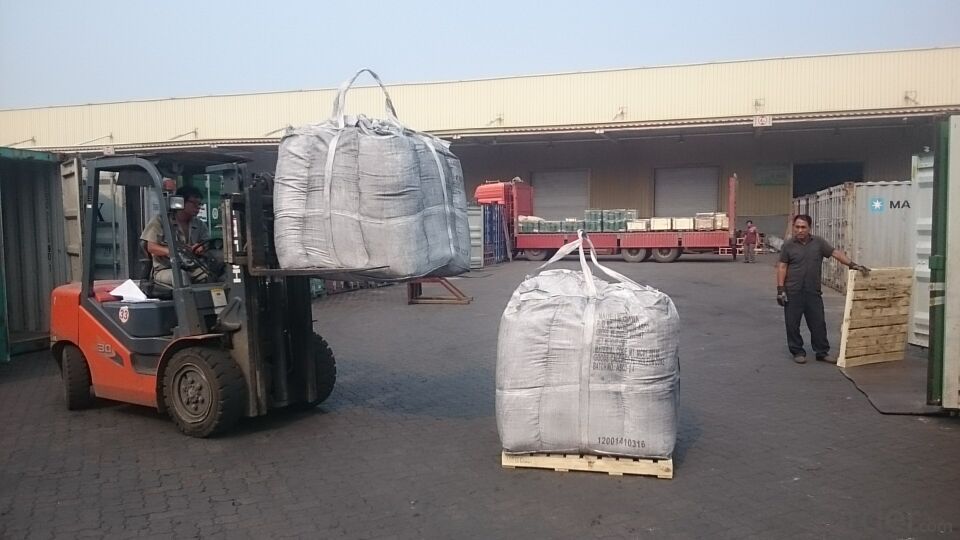
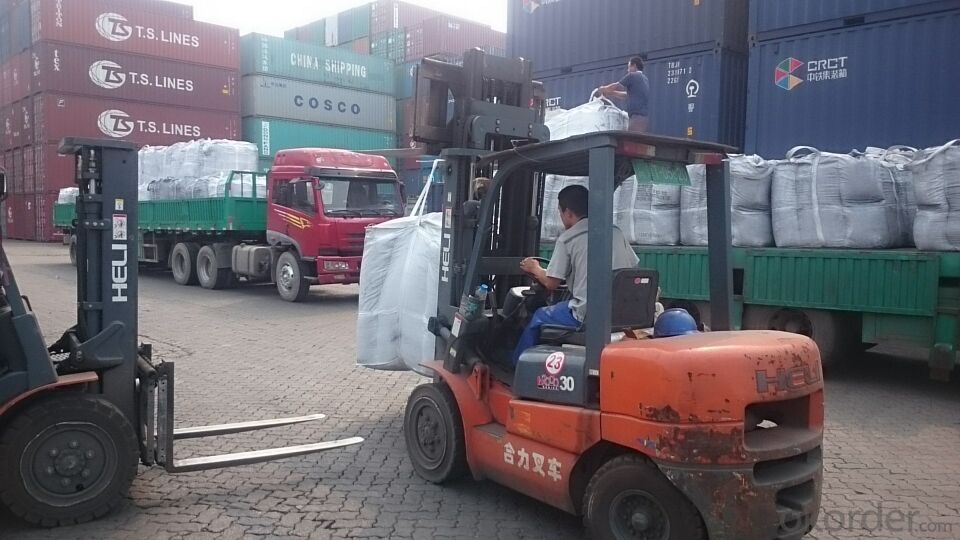
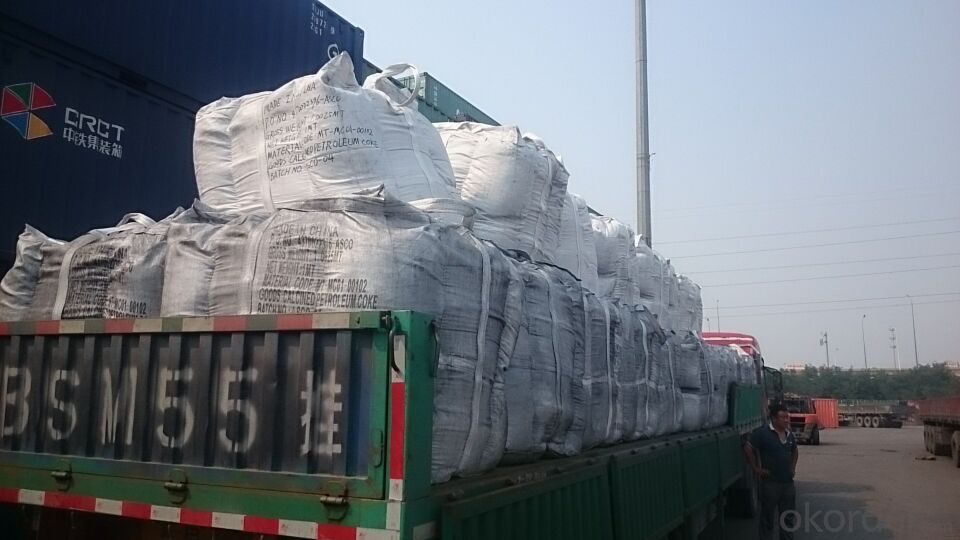
FAQ:
1. Your specification is not very suitable for us.
Please offer us specific indicators by TM or email. We will give you feedback as soon as possible.
2. When can I get the price?
We usually quote within 24 hours after getting your detailed requirements, like size, quantity etc. .
If it is an urgent order, you can call us directly.
3. Do you provide samples?
Yes, samples are available for you to check our quality.
Samples delivery time will be about 3-10 days.
4. What about the lead time for mass product?
The lead time is based on the quantity, about 7-15 days. For graphite product, apply Dual-use items license need about 15-20 working days.
5. What is your terms of delivery?
We accept FOB, CFR, CIF, EXW, etc. You can choose the most convenient way for you. Besides that,
we can also shipping by Air and Express.
6. Product packaging?
We are packed in bulk ship or in ton bag or placing in container or according to your requirements.
7. Notice
please note that the price on Alibaba is a rough price. The actual price will depends on raw materials, exchange rate wage and your order quantity .Hope to cooperation with you, thanks !
- Q: How does carbon contribute to the structure of DNA?
- The structure of DNA relies heavily on carbon, as it plays a critical role in its composition. Carbon is a crucial element in the formation of the sugar-phosphate backbone, which is an integral part of the DNA molecule. This backbone consists of alternating sugar and phosphate molecules, with the sugar molecule being deoxyribose in DNA. Deoxyribose sugar contains five carbon atoms, making carbon a significant component in its structure. These carbon atoms provide stability and rigidity to the backbone, ensuring the overall structure of the DNA molecule remains intact. Additionally, carbon also contributes to the formation of the nitrogenous bases that form the ladder-like structure of DNA. There are four nitrogenous bases in DNA: adenine (A), guanine (G), cytosine (C), and thymine (T). Carbon atoms are present in the structure of each of these bases, giving them their distinct chemical properties. Various functional groups containing carbon, such as amino and keto groups, actively participate in hydrogen bonding and stacking interactions that determine the base pairing within the DNA double helix. To summarize, carbon is an indispensable element in the structure of DNA. It not only provides stability and rigidity to the sugar-phosphate backbone but also plays a crucial role in the formation of the nitrogenous bases. The unique properties of carbon enable DNA to maintain its double helix structure and facilitate the accurate transmission of genetic information.
- Q: How is carbon used in the production of plastics?
- Carbon is used in the production of plastics through a process called polymerization. Carbon atoms are linked together to form long chains or networks known as polymers, which give plastics their characteristic properties. These carbon-based polymers can be molded into various shapes and sizes to create a wide range of plastic products that are used in our daily lives.
- Q: How does carbon contribute to global warming?
- Carbon contributes to global warming through the greenhouse effect. When carbon dioxide (CO2) and other greenhouse gases are released into the atmosphere through human activities like burning fossil fuels, deforestation, and industrial processes, they trap heat from the sun and prevent it from escaping back into space. This leads to an increase in the Earth's temperature, resulting in global warming and climate change.
- Q: Why does the carbon content of steel increase and the mechanical properties change?
- Steel is an alloy of iron and carbon in 0.04%-2.3% between carbon content. In order to ensure its toughness and plasticity, the main elements in addition to iron, carbon and carbon content is generally not more than 1.7%. steel, and silicon, manganese, sulfur and phosphorus. Classification method of steel variety, there are seven kinds of main methods:1, according to quality classification(1) ordinary steel (P = 0.045%, S = 0.050%)(2) high quality steel (P, S = 0.035%)(3) high quality steel (P = 0.035%, S = 0.030%)2. Classification by purpose(1) building and engineering steel: A. ordinary carbon structural steel; B. low-alloy structural steel; C. reinforced steel(2) structural steelSteel manufacturing machinery: A. (a) quenched and tempered steel; surface hardening (b) steel structure: including carburizing steel, surface hardened steel, with infiltration of ammonia (c) free cutting steel; steel structure; (d) cold forming steel: steel, cold stamping.B. spring steelC. bearing steel(3) tool steel: A. carbon tool steel; B. alloy tool steel; C. high speed tool steel(4) special performance steel: A. stainless acid resistant steel, B. heat-resistant steel, including oxidation resistant steel, hot strong steel, air valve steel, C. electric heating alloy steel, D. wear-resistant steel, e. low temperature steel, F. electrical steel(5) professional steel - such as bridge steel, shipbuilding steel, boiler steel, steel for pressure vessel, steel for agricultural machinery, etc.
- Q: What are the effects of carbon emissions on the Arctic ecosystem?
- The Arctic ecosystem is significantly impacted by carbon emissions, primarily due to global warming. The release of carbon dioxide and other greenhouse gases into the atmosphere traps heat, leading to increased temperatures worldwide. However, the Arctic is particularly susceptible to these effects because of its unique characteristics. One of the most noteworthy consequences of carbon emissions on the Arctic ecosystem is the rapid melting of ice. Increasing temperatures cause glaciers and ice sheets to decrease in size, resulting in the loss of habitat for ice-dependent species like polar bears, walruses, and seals. These animals not only depend on the ice for resting and breeding but also for hunting and finding food. The reduction of their natural habitat has led to a decline in their populations, impacting the delicate balance of the Arctic food chain. Moreover, the melting of ice leads to rising sea levels, which can have cascading effects on coastal areas. Many Arctic communities, including indigenous peoples, are located near the coast and rely on the sea for their livelihoods. The increase in erosion, flooding, and storm surges due to rising sea levels pose a threat to their homes, infrastructure, and traditional ways of life. Furthermore, carbon emissions contribute to ocean acidification, a process in which excess carbon dioxide absorption by seawater lowers its pH level. This acidification has detrimental effects on marine organisms such as shellfish, corals, and plankton, which struggle to build and maintain their calcium carbonate structures. These organisms serve as essential food sources for various Arctic species, including fish, seabirds, and marine mammals. The decline in their populations disrupts the intricate web of life in the Arctic and can have far-reaching consequences. Climate change caused by carbon emissions also disrupts the timing and patterns of seasonal events, such as plant growth, bird migration, and the availability of food resources. This mismatch can have severe consequences for species that rely on specific timing for reproduction, migration, and survival. In summary, the effects of carbon emissions on the Arctic ecosystem are significant and extensive. The loss of sea ice, rising sea levels, ocean acidification, and disrupted ecological processes all contribute to the vulnerability of Arctic species and communities. Urgent action to reduce carbon emissions, mitigate climate change, and protect this fragile ecosystem is crucial for the long-term preservation of the Arctic.
- Q: What are the effects of carbon emissions on the stability of coastal ecosystems?
- Coastal ecosystems are significantly affected by carbon emissions, resulting in various consequences. Ocean acidification, caused by excess carbon dioxide dissolving in seawater and lowering its pH, is one of the primary effects. This acidification harms marine organisms, especially those dependent on calcium carbonate for shell formation, such as corals, oysters, and some plankton. With increased acidity, the ability of these organisms to create and maintain their protective structures is hindered, leading to slower growth, weaker shells, and heightened vulnerability to predation and disease. Furthermore, global warming, which is exacerbated by carbon emissions, leads to rising sea levels and more intense storms. Coastal ecosystems like mangroves, salt marshes, and seagrass beds serve as barriers against storm surges and provide vital habitats for numerous species. However, as sea levels rise, these ecosystems face the risk of submersion, resulting in the loss of their protective functions and the displacement of various plant and animal species. In addition, carbon emissions-driven climate change disrupts ocean currents and disturbs nutrient balances in coastal waters. This disturbance can cause shifts in the distribution and abundance of marine species, affecting the entire food chain. For example, if certain species that serve as prey or predators are negatively impacted, it can create a ripple effect throughout the ecosystem. These disruptions ultimately lead to reduced biodiversity, the loss of crucial species, and the potential collapse of entire coastal ecosystems. To safeguard these fragile ecosystems and the countless species that depend on them, it is imperative to reduce carbon emissions and mitigate the impacts of climate change.
- Q: Advantages of carbon fiber
- Carbon fiber axial strength and high modulus, no creep, fatigue resistance, between heat and electrical conductivity between the metal and non metal, low thermal expansion coefficient, good corrosion resistance, low fiber density, good permeability of X ray.
- Q: How does carbon dioxide affect the health of marine organisms?
- Carbon dioxide can have significant impacts on the health of marine organisms. When carbon dioxide is absorbed by seawater, it undergoes a chemical reaction that causes the water to become more acidic. This process is known as ocean acidification. Ocean acidification interferes with the ability of many marine organisms to build and maintain their shells and skeletons. For instance, corals, oysters, and other shellfish rely on calcium carbonate to form their protective structures. However, under more acidic conditions, the availability of carbonate ions decreases, making it harder for these organisms to calcify. This can lead to weakened shells, reduced growth rates, and increased vulnerability to predation and disease. Furthermore, ocean acidification can also disrupt the reproductive and developmental processes of marine organisms. For example, some studies have shown that increased CO2 levels can affect the ability of fish to locate their preferred habitats, find mates, and successfully reproduce. Additionally, some species of fish and invertebrates have been found to exhibit altered behavior and impaired sensory functions under high CO2 conditions. In addition to these direct effects, ocean acidification can also have indirect consequences for marine organisms by disrupting entire ecosystems. For instance, the decline in coral reefs due to reduced calcification can have cascading effects on the whole reef ecosystem, impacting the biodiversity and productivity of these important marine habitats. Overall, the increasing levels of carbon dioxide in the atmosphere are not only contributing to global climate change but also leading to ocean acidification, which poses significant threats to the health and survival of many marine organisms. It is crucial to address and mitigate the causes of carbon dioxide emissions in order to protect the delicate balance of our oceans and the diverse range of species that depend on them for their survival.
- Q: Rod box material, there is a kind of material called carbon fiber, who knows this material is good?
- Carbon fiber has many excellent properties, carbon fiber axial strength and high modulus, low density, high performance, no creep, non oxidation under the environment of high temperature resistance, good fatigue resistance, between heat and electrical conductivity between the metal and non metal, smaller thermal expansion coefficient and anisotropy, good corrosion resistance, X Radiability good. Good conductivity, thermal conductivity, good electromagnetic shielding, etc..
- Q: What are the main factors that affect the strength of carbon fibers?
- The main factors affecting the strength of carbon fibers arePAN precursorPreoxidationcarbonizationGraphitizationsurface treatmentCoilingcarbon fibre
Send your message to us
GPC with lower N0.03% max in Low VM with smaller size
- Loading Port:
- Tianjin
- Payment Terms:
- TT OR LC
- Min Order Qty:
- 21 m.t.
- Supply Capability:
- 5000 m.t./month
OKorder Service Pledge
OKorder Financial Service
Similar products
Hot products
Hot Searches
